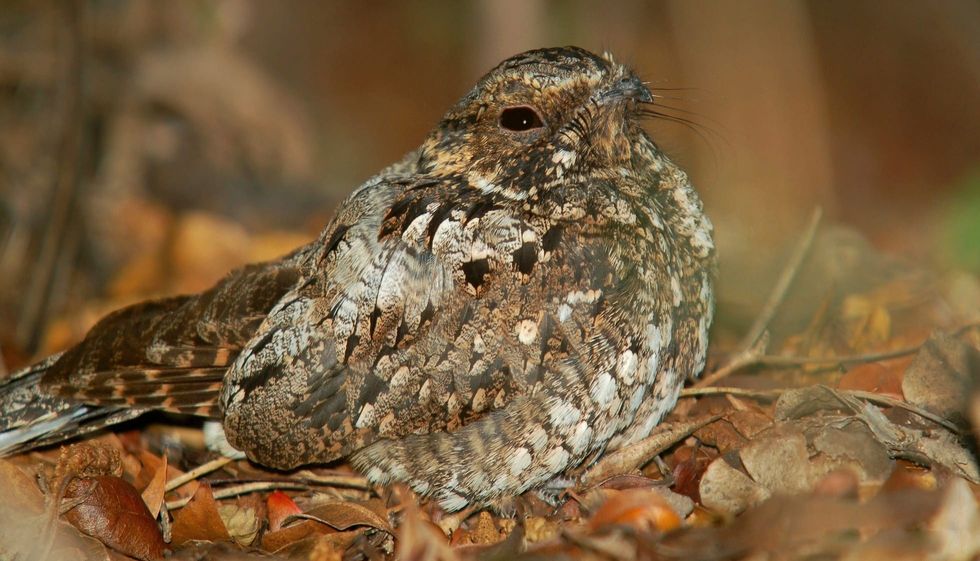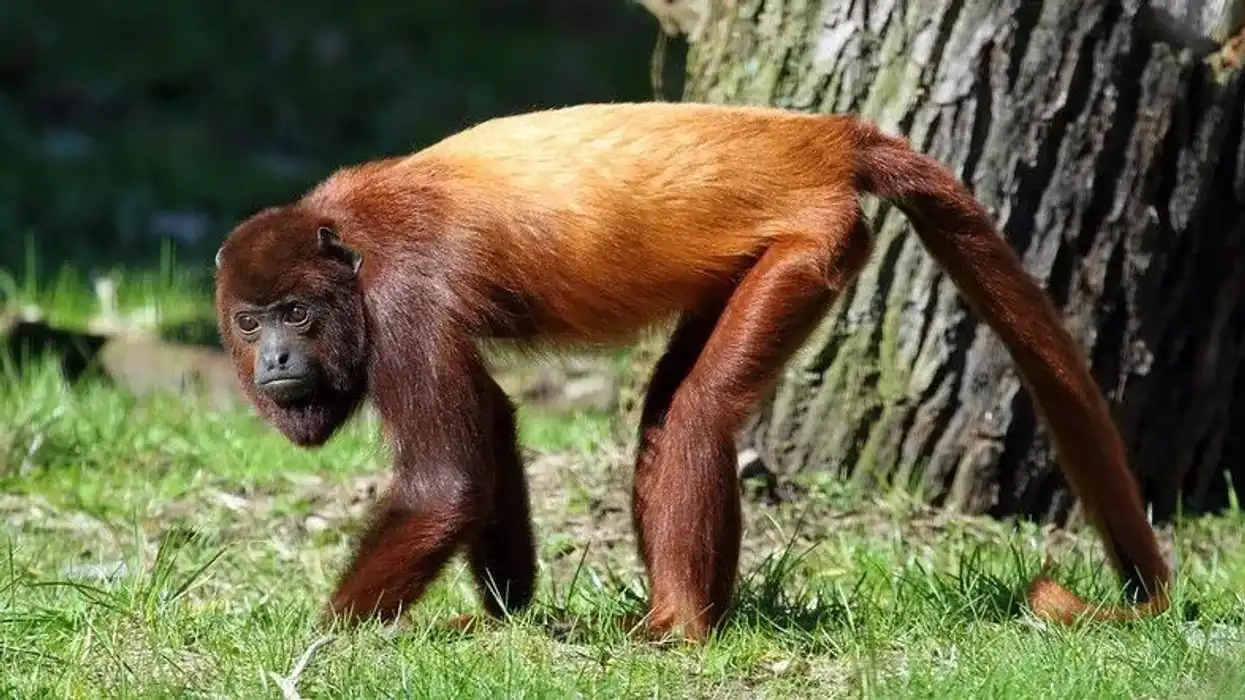The Puerto Rican nightjar (Antrostomus noctitherus), or the Puerto Rican whip-poor-will, is a small specimen of bird species native to central Puerto Rico.
These birds were thought to be extinct as there were no sightings in the wild for many years. In the early period of its rediscovery, it was noted that this bird had a small population, and over the years this population has seen a steep decline due to the clearing of forest in their natural habitat in Puerto Rico.
These birds have been given a status of an Endangered species of wildlife and are now legally protected by the Puerto Rican government.
Hopefully, with the strict rules and regulations surrounding nightjars, these birds can get back to their once dense population or at least attain a high enough number to be moved from their Endangered status to something safer.
If you liked these true facts about the Puerto Rican nightjar, then you'll surely like these facts about the great eared nightjar and the great green macaw too!
Puerto Rican Nightjar Interesting Facts
What type of animal is a Puerto Rican nightjar?
The Puerto Rican nightjar (Antrostomus noctitherus), also known as the Puerto Rican whip-poor-will, is a member of the nightjar family and is considered to be an Endangered species of wildlife. This bird specimen was thought to be extinct until it was sighted in 1961.
What class of animal does a Puerto Rican nightjar belong to?
The Puerto Rican nightjar belongs to the Aves class that consists solely of birds.
How many Puerto Rican nightjars are there in the world?
Over the years, these Puerto Rican nightjars have seen a rapid decline in population distribution due to human interference in their natural habitat range. The population distribution of this bird species is spread throughout Puerto Rico, and their current population range is estimated to be around 1,400-2,000 breeding and non-breeding individuals.
Where does a Puerto Rican nightjar live?
The Puerto Rican nightjar (Antrostomus noctitherus) is an endemic species that is non-migratory in nature. The distribution range of these birds is found in the coastal dry forest areas and lower cordillera forests. Nightjars are found in scattered populations in the Susúa Forest and the Maricao State Forest, the Guayanilla Hills, and the Guánica Dry Forest.
What is a Puerto Rican nightjar's habitat?
Puerto Rican nightjars are found in dry limestone forests. These birds are found on the southern slopes of the Susa area and occur at an elevation of 750 ft (229 m) in the Guanica Forest. The breeding and nesting habitats of these birds are found in evergreen forests, deciduous forests, and plantations in their natural habitat range.
Who do Puerto Rican nightjars live with?
Puerto Rican nightjars are solitary birds and prefer to live alone, and only come together during the breeding season. The dark plumage of this bird species helps them in camouflaging in their habitat range and they are hard to spot in the daylight. These birds can be spotted at night due to their eyes reflecting off car headlights.
How long does a Puerto Rican nightjar live?
The lifespan of this bird species is unknown.
How do they reproduce?
The Puerto Rican nightjar (Antrostomus noctitherus) is a monogamous specimen and mates with a single individual throughout the breeding season which begins in April and ends in June. In some cases, breeding starts early in late February through early July.
The male nightjar establishes a territory during the breeding season and will attract females through songs. If the female is receptive, she will come to the male and after a period of two to seven days of courtship, mating occurs at the nesting site on the ground.
After fertilization, females lay eggs on the ground among the leaf litter, and an average of one to two eggs are laid.
Both parents take turns in the incubation process. The male will guard the nesting ground by hovering over the site in a vertical position with its white tail spread out.
These species are careful with their eggs and will sit quietly on them in an effort to not garner any attention from predators. If they feel there is a threat, these birds will move the young to a new nest.
What is their conservation status?
Currently, the International Union for Conservation of Nature (IUCN) Red List has listed this bird as an Endangered species due to its small, scattered distribution. This bird species is under strict conservation efforts by the Puerto Rico Department of Natural and Environmental Resources Forestry Division in their native coastal wildlife habitats.
The conservation and protection of this species are of utmost importance to the government of Puerto Rico.
Puerto Rican Nightjar Fun Facts
What do Puerto Rican nightjars look like?
The Puerto Rican nightjar (Antrostomus noctitherus) is a small bird that is similar in size to the American robin. These birds are nocturnal in nature and have long bristles around their mouth.
Their black, brown, and gray plumage help this species to protect itself from predators. A white band can be seen on the throat of this species and their color variation is topped off with white spots at the base of their tail feathers.
How cute are they?
These birds have fluffy plumage and dark black eyes, and the cuteness factor of this species is increased by their small size. On a scale of one to five, this species would easily get a solid four!
How do they communicate?
These Puerto Rican nightjars are one of the most vocal species of birds in the massive Aves family. In the wild, they have been recorded singing throughout the year. They do, however, become much more vocal during the breeding season as males sing to attract potential mates. The Puerto Rican nightjar sound is a series of short calls.
How big is a Puerto Rican nightjar?
The average size of the Puerto Rican nightjar is 8.25-8.6 in (21-22 cm) with a 5.3 in (13.5 cm) wingspan. These birds are almost three times the size of the bee hummingbird, which is recognized as the smallest bird species in the world at a size of about 1.9-2.3 in (5-6 cm).
How fast can a Puerto Rican nightjar move?
Due to a lack of data, the speed at which these species move cannot be stated.
How much does a Puerto Rican nightjar weigh?
Puerto Rican nightjars are lightweight and weigh between 1.3-1.4 oz (39-41 g).
What are the male and female names of the species?
No specific name has been assigned to either sex.
What would you call a baby Puerto Rican nightjar?
A baby Puerto Rican nightjar, like most bird babies, is known as a chick. Both parents take care of the babies in the nest by feeding them until they fledge.
What do they eat?
Puerto Rican nightjars are insectivores and mainly feed on flying insects.
Are they dangerous?
No, these birds are not dangerous at all. In the past, this night-flying species of birds was linked with witchery!
Would they make a good pet?
No, the trade of this species is strictly prohibited due to conservation efforts as the status of these birds in the wildlife is that of an Endangered species.
Did you know...
The short eared owl is one of the most common predators of young nightjars.
The Puerto Rican nightjar's Spanish name is Guabairo de Puerto Rico, which is derived from the name the Taino Indians gave to these birds.
The chuck wills widow is a similar species and is larger than the Puerto Rican nightjar. It is the largest nightjar in North America.
The current population of this nightjar is estimated to be only 3% of its once vast population.
What does the Puerto Rican nightjar need to survive?
In order to survive, this very rare member of the bird family needs strict protection against illegal deforestation practices. A thriving ecosystem full of plants and insects is necessary for these birds to survive.
Why is the Puerto Rican nightjar endangered?
These species have seen a rapid decline in the population and have been given the status of an Endangered species due to human interference in their natural habitat. Vast areas of forests have been cut down over the years as demand for land increased for both commercial and non-commercial reasons.
Here at Kidadl, we have carefully created lots of interesting family-friendly animal facts for everyone to discover! For more relatable content, check out these ivory billed woodpecker facts and belted kingfisher facts pages.
You can even occupy yourself at home by coloring in one of our free printable owl reading coloring pages.









